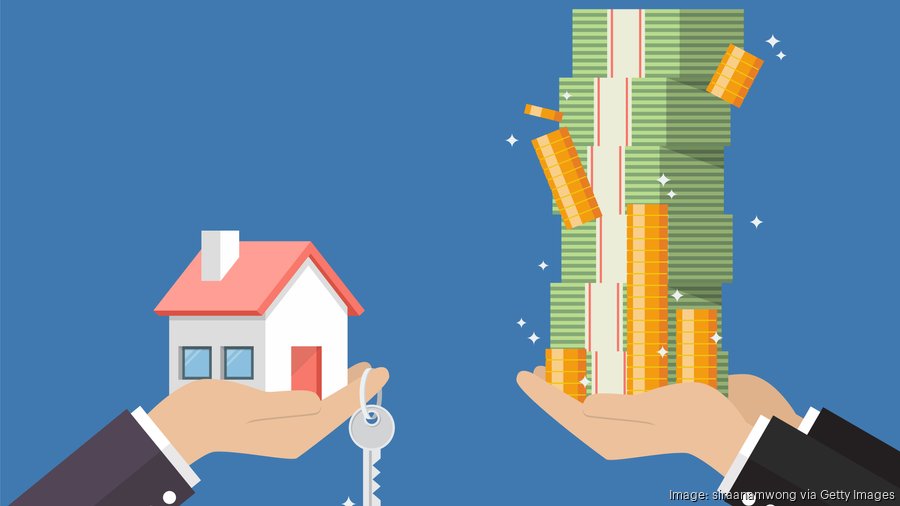Categories
Real Estate Market TrendsPublished September 27, 2025
Investors are snapping up more single-family homes

By Andi Medici
Investors are snapping up an ever-growing share of single-family homes, and it’s the smallest investors leading the way.
Real estate investors purchased 33% of all single-family residential homes sold in the second quarter, according to the Q2 Investor Pulse Report from BatchData. That is up from 27% of all single-family homes in the first quarter and up from 25.7% in 2024.
It's also the highest share of investor purchases in more than five years, according to the report. Overall, investors own roughly 20% of the 86 million single-family homes in the country.
The development comes as analysts in some pandemic-era real estate hotspots have seen a shift in how properties are changing hands in their markets. In some markets, that shift actually means fewer investors are purchasing and more buyers are planning to occupy the homes.
"Interestingly, while the percentage of single-family homes purchased by investors rose to a five-year high, the actual number of homes purchased during the second quarter of 2025 was 16,000 fewer than a year ago," said BatchData Co-Founder and Chief Innovation Officer Ivo Draginov, in a statement. "So the relatively high percentage of home purchases by investors is at least partly due to overall home sales being weaker in Q2 2025 than they were in Q2 2024."
Most of the investors buying properties are relatively smaller operations, with 87% of single-family homes owned by investors with one to five properties. The largest investors, those owning 1,000 or more properties, account for about 2% of all investor-owned homes.
The study also found that the largest investors are in the process of selling off their inventory, with the second quarter being the sixth quarter in a row when large investors sold more homes than they bought.
The states with the highest percentage of single-family homes owned by investors are essentially in tourist hotspots, with Maine at 31%, Montana at 31%, Alaska at 27% and Hawaii at 26%. Other states with higher-than-average percentages of investor-owned homes include highly affordable and landlord-friendly Arkansas, Mississippi and West Virginia, as well as states that have benefited from recent population migration, including Idaho, Vermont and Wyoming.
While investors seek out low prices, the average purchase price of $455,481 is the highest recorded by BatchData and far higher than the average of $389,562 in the second quarter of 2024.
Residential real estate market dynamics change
Some types of investors are feeling a squeeze. Home flippers, for example, are seeing their profits shrink dramatically, plummeting to the lowest point in years.
The latest report from ATTOM, which provides property data and analytics, found that home flippers netted a 25.1% return on investment before expenses in the second quarter, the lowest margin ATTOM has recorded since the second quarter of 2008. It's also down from a high point of a 62.9% in fall 2012.
Gross profit, the difference between what a flipper paid for a property and what they sold it for, also has dropped. The typical flipped home netted $65,300 in the second quarter, about 4% less than the first quarter and 13.6% less than the second quarter of 2024.
The culprit? High home prices that push flippers to buy in at a higher cost, squeezing margins and trimming profits.
About 7.4% of homes sold in the second quarter were sold by flippers, according to ATTOM, down from 8.3% in the first quarter and slightly lower than the 7.5% of homes sold in the second quarter of 2024. But as flippers scour the housing market for deals, they also are competing with homebuyers looking for affordable properties, said ATTOM CEO Rob Barber
Home prices nationally have grown rapidly since the onset of the Covid-19 pandemic. In the second quarter of 2020, the median sale price for U.S. homes was $317,100, according to data compiled by the Federal Reserve. By the second quarter of 2022, that number was $437,700, up 38%. It dropped to $410,800 in the first quarter of 2025, but that's still up nearly 30% from the early days of the pandemic five years ago.
It's not just prices either, as most potential homebuyers are expecting the cost of homeowners insurance to skyrocket in the coming years. A survey by Realtor.com of recent and prospective homebuyers found that 88% believe they will pay more for homeowners insurance in the near future, and 42% said they already have experienced a rise in homeowners insurance costs. Additionally, 75% said they believe homeowners insurance eventually could become unaffordable..
But there is some good news. The best time of the year to buy a home is coming up, giving frustrated house hunters an increased chance to close a desired deal.
The week of October 12-18 is what Realtor.com is calling the “sweet spot” for home shoppers. Why? A rare combination of higher inventory, lower prices and less competition makes it ideal for buyers. And even though it's not exactly a buyer's market overall, the improved buying conditions could feel like a breath of fresh air for prospective buyers.
Final Thoughts:
Investor activity in the single-family home market is at a five-year high, but the surge is driven mostly by small investors and a slower pace of overall home sales. Large investors are offloading inventory, while flippers are seeing their profit margins squeezed due to high purchase prices. This dynamic creates opportunities for traditional buyers — especially with October’s “sweet spot” approaching, offering higher inventory, lower prices, and less competition.





